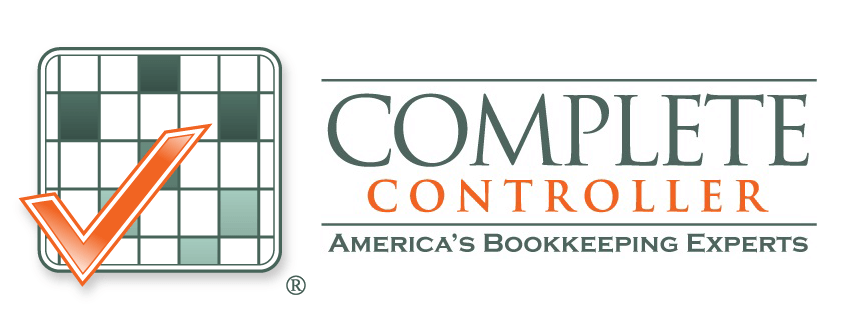By: Jennifer Brazer
Jennifer is the author of From Cubicle to Cloud and Founder/CEO of Complete Controller, a pioneering financial services firm that helps entrepreneurs break free of traditional constraints and scale their businesses to new heights.
Fact Checked By: Brittany McMillen
Marketing to Seniors: Essential Strategies for Success
Marketing to seniors represents not only a growing market but also an audience with unique needs and substantial spending power. However, engaging this demographic effectively takes more than flashy sales pitches. As the founder of Complete Controller, I’ve worked for over 15 years, helping businesses connect with their ideal audiences, including older adults. What I’ve learned is this: to reach seniors, you must respect their values, address their concerns, and communicate with clarity.
Let’s explore how to craft marketing strategies that resonate, inspire trust, and drive results in this increasingly vital demographic.

Understanding the Senior Demographic
Who are seniors, and what do they value?
Seniors, defined as individuals aged 65 and older, are incredibly diverse in their interests, life experiences, and purchasing behaviors. Yet they share common priorities: trust, simplicity, and value. According to AARP Research, seniors are attracted to brands that exude reliability and offer transparent pricing and services. They want to feel respected, not patronized.
This demographic is growing at a remarkable pace. In 2020, the U.S. had 49.2 million seniors; by 2030, that figure is projected to reach 73.1 million [1]. Beyond their numbers, seniors hold significant purchasing power. The average senior household spends $47,675 annually compared to $43,635 for households overall [2].
Engaging this group means addressing their values directly. Seniors research their options thoroughly before making decisions, and they’re drawn to brands that align with their principles.
Addressing their pain points
Nearly every senior faces challenges tied to health, finances, and social connections. These concerns influence their purchasing decisions and can be powerful motivators if properly addressed.
- Health: Products or services that promote wellness and independent living often catch their attention. For example, marketing software that tracks health metrics will resonate more if you emphasize what it prevents or protects rather than simply listing features.
- Financial security: Seniors value clarity and support in financial decision-making. Providing resources on responsible credit management or ensuring accurate financial statement accuracy can alleviate their worries about savings and income stability.
- Social isolation: Building genuine connections through your marketing—like focusing on communities your product fosters—can make your messaging more impactful. AARP’s workshops for tech beginners help seniors combat isolation while offering practical skills [3].
Addressing these needs with empathy and problem-solving goes a long way toward credibility.
Crafting Effective Messaging for Seniors
Keep it simple and direct
Over the years, I’ve seen businesses lose opportunities because their messaging was overcomplicated, dripping with jargon, or just plain confusing. When speaking to seniors, simplicity isn’t optional—it’s essential. Instead of saying, “We streamline access to cloud-based estate planning mediums,” say, “We help protect your family’s financial future—step by step.”
Confidence, clarity, and sincerity build trust. Seniors aren’t interested in hype. They value communication that respects their intelligence and gets to the point.

Leverage storytelling
Seniors connect with emotional and relatable narratives. Storytelling works because it builds bridges between concepts and real-world experiences. For instance, if you’re promoting a retirement community, share stories of current residents thriving and building relationships in your facilities.
“Meet Earl. At 72, he worried about leaving his neighborhood behind. Now, Earl spends mornings walking our scenic trails and afternoons in woodworking classes with friends who share his love for creativity.”
Such stories don’t just illustrate what you offer—they show how you’re already solving concerns for people just like them.
Leveraging Digital and Traditional Marketing Channels
The digital myth: Seniors are not online
If you’ve heard someone say, “Seniors aren’t tech-savvy,” let me stop you right there. That myth is outdated. In 2020, 73% of seniors used the internet, and 47% owned a smartphone [3]. Many seniors shop online and actively engage with platforms like Facebook and email.
Here’s how to make digital marketing work for seniors:
- Email marketing: Personalize every email campaign. Use clear subject lines, direct messaging, and prominent call-to-action buttons.
- Mobile optimization: Ensure your website functions smoothly on smartphones with readable fonts and simple navigation.
- Social media: Focus on platforms like Facebook, where seniors actively engage and participate in discussions. AARP’s Facebook initiatives are an excellent benchmark—they blend educational resources with inspiring stories that spark thousands of interactions.
Traditional marketing still matters
Even with rising digital adoption, seniors still value trusted channels like newspapers, direct mail, radio, and television. These formats have been their go-tos for decades and haven’t lost their relevance.
For example, I worked with a retirement services firm that saw outstanding results from direct mail campaigns. By targeting local seniors with personalized letters, they increased inquiries by 30%. The key takeaway? Don’t underestimate the impact of familiar, tangible outreach.
Building Trust and Credibility
E-E-A-T principles in action
When marketing to seniors, trust is non-negotiable. One way to establish it? Apply Google’s E-E-A-T framework: Experience, Expertise, Authoritativeness, and Trustworthiness. Showcase evidence that you deeply understand their concerns and can deliver on your promises.
- Share credentials and achievements.
- Highlight testimonials and success stories from happy senior customers.
- Include stats or certifications that back your claims—for example, partnerships with well-known senior organizations or safety certifications on your products.
Seniors are savvy consumers. They’ve seen it all and expect authenticity. Brands like AARP thrive because they continuously demonstrate a value-first approach. Their consistency cultivates enduring loyalty [3].
Optimizing for Accessibility and User Experience
Accessibility is a game-changer. Your website can’t just look good—it has to work for everyone. What frustrates one senior visitor (tiny fonts, endless scrolling, broken links) will likely frustrate many, leading to lost opportunities.
Practical tips for senior-friendly design
- Use 14pt or larger font sizes paired with high-contrast colors.
- Design navigation so users can find what they need with no more than two clicks.
- Organize content into clear sections, favoring bullet points and bolded headings for easy scanning.
Make sure your visuals reflect their experiences, too. For example, when promoting a retirement home, avoid generic stock photos of smiling people—opt for authentic images that seniors can relate to.
Engaging Seniors Online
Meaningful social media practices
The key to resonating with seniors on platforms like Facebook is meaningful, conversational interactions. Share stories, urge comments, and encourage dialogue. Short, impactful video content is a great way to capture interest and build engagement.
Personalize email campaigns
Email might sound old school, but trust me—this group checks their inboxes. Focus on personalization. Use names, craft relatable subject lines, and emphasize solutions over features. For example:
- Compelling subject line: “Your Retirement, Stress-Free.”
- Call to sction: “Click here to protect your financial future with step-by-step guidance.”
Emails like these resonate more because they tap into emotions tied to their concerns.
Conclusion: Trust and Value Win the Day
Marketing to seniors isn’t complicated; it’s intentional. Align your strategies with their unique expectations. Prioritize transparency, acknowledge their pain points, and tailor your messaging, whether you’re engaging them online or through print. As someone who has built a career in financial clarity, I know the power of trust. A marketing strategy for seniors isn’t just a campaign—it’s a handshake of sincerity.
If you’re ready to start developing strategies that inspire, feel free to connect with our team at Complete Controller. Together, we’ll create marketing solutions built to resonate with—and respect—the senior community.

FAQ
What’s the best digital platform for engaging seniors?
Facebook stands out. Seniors use it to connect, share, and learn.
How do I design my site for senior users?
Make it simple: larger fonts, more straightforward navigation, and mobile-friendly designs work wonders.
Are traditional marketing methods still relevant for seniors?
Yes, traditional advertising, like print and mail, remains highly effective for trust-building.
Why are stories effective in senior marketing?
Stories trigger emotional responses, demonstrating your understanding and reliability.
What’s the key to building loyalty among seniors?
Trust and value—offer real solutions, not just sales pitches.
Sources
[1] United States Census Bureau. (2020). The Population 65 Years and Over: 2020.
[2] The Senior Citizens League. (2023). Social Security Loss of Buying Power Study.
[3] AARP Research. (2023). AARP Research on Seniors and Technology.
[4] American Marketing Association. (2024). Marketing Industry Stats and Information.
 About Complete Controller® – America’s Bookkeeping Experts Complete Controller is the Nation’s Leader in virtual bookkeeping, providing service to businesses and households alike. Utilizing Complete Controller’s technology, clients gain access to a cloud platform where their QuickBooks™️ file, critical financial documents, and back-office tools are hosted in an efficient SSO environment. Complete Controller’s team of certified US-based accounting professionals provide bookkeeping, record storage, performance reporting, and controller services including training, cash-flow management, budgeting and forecasting, process and controls advisement, and bill-pay. With flat-rate service plans, Complete Controller is the most cost-effective expert accounting solution for business, family-office, trusts, and households of any size or complexity.
About Complete Controller® – America’s Bookkeeping Experts Complete Controller is the Nation’s Leader in virtual bookkeeping, providing service to businesses and households alike. Utilizing Complete Controller’s technology, clients gain access to a cloud platform where their QuickBooks™️ file, critical financial documents, and back-office tools are hosted in an efficient SSO environment. Complete Controller’s team of certified US-based accounting professionals provide bookkeeping, record storage, performance reporting, and controller services including training, cash-flow management, budgeting and forecasting, process and controls advisement, and bill-pay. With flat-rate service plans, Complete Controller is the most cost-effective expert accounting solution for business, family-office, trusts, and households of any size or complexity.




